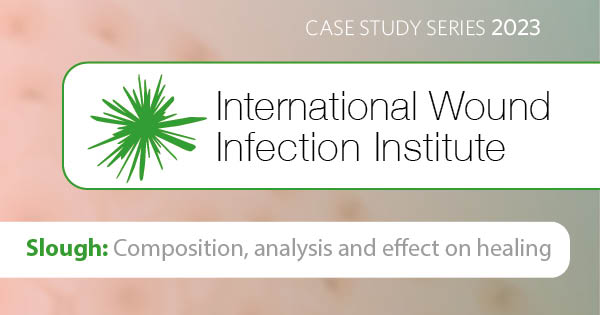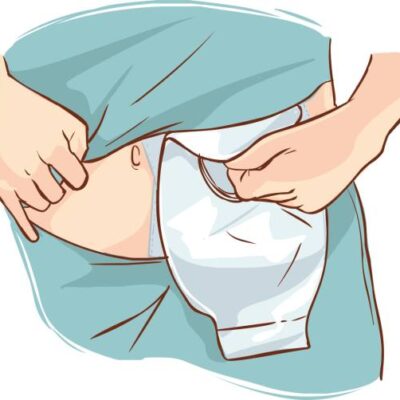Discover slough the hidden enemy of wound healing and how the International Wound Infection Institute provides expert recommendations to combat this issue.
Introduction
When it comes to wound care, understanding the various elements that can impede the healing process is crucial. One such element is slough. Slough is a substance that often forms on wounds and can significantly hinder the healing process. In this article, we will explore what slough is, why it is detrimental to wound healing, and discuss recommendations from the International Wound Infection Institute. By gaining a deeper understanding of slough and its impact on wound healing, we can take proactive steps to promote better wound care outcomes.
What is Slough?
Slough is a term used to describe the yellowish or tan-colored material that can be present on the surface of a wound. It is composed of dead cells, fibrin, and other debris that accumulate as a result of the body’s natural healing process. Slough can be thick and adherent, making it difficult to remove without intervention. Its presence on a wound can indicate a disruption in the healing process and the need for further wound care management.
How Does Slough Form?
Slough forms as a natural part of the wound healing process. When a wound occurs, the body initiates a series of events to repair the damaged tissue. In the early stages, inflammation occurs as the body’s immune response is activated to fight off any potential infection. During this phase, white blood cells are recruited to the wound site to clear away debris and bacteria. As the wound progresses to the next stage, known as the proliferative phase, new tissue begins to form. However, in some cases, the wound may become stuck in the inflammatory phase, leading to the accumulation of slough.
Why is Slough Bad for Wounds?
Slough can have several negative effects on the wound healing process. Understanding these effects is essential for proper wound management and achieving optimal outcomes. Let’s explore why slough is considered detrimental to wound healing.
1. Delays Healing
One of the primary reasons slough is bad for wounds is its ability to delay the healing process. The presence of slough on a wound prevents the growth of healthy tissue and can lead to a prolonged inflammatory phase. This delay can result in a chronic wound, making it even more challenging to achieve complete wound closure.
2. Provides a Barrier to Healing
Slough acts as a barrier between the wound bed and the surrounding environment. This barrier hinders the migration of new cells to the wound site, preventing the formation of healthy granulation tissue. Granulation tissue is crucial for wound healing as it provides a foundation for new blood vessels and skin cells to develop.
3. Increases Risk of Infection
Wounds covered in slough are more susceptible to infection. The presence of dead tissue provides an ideal environment for bacteria to multiply and thrive. Infections can further impede the healing process and may require additional interventions, such as antibiotics or surgical debridement.
4. Hinders Wound Assessment
Accurate wound assessment is vital for determining the appropriate course of treatment. Slough can make it challenging to visualize the wound bed and assess the depth and extent of the wound. This hindrance may result in delayed or inadequate interventions, leading to further complications.
5. Impairs Moisture Balance
Maintaining an optimal moisture balance in the wound is crucial for proper healing. Slough can disrupt this balance by trapping excessive moisture, leading to maceration of the surrounding healthy tissue. On the other hand, if the wound becomes too dry, it can impede cell migration and result in a dry, hard eschar formation.
Recommendations from the International Wound Infection Institute
The International Wound Infection Institute (IWII) is a globally recognized authority on wound care and infection prevention. The IWII provides evidence-based recommendations for the management of slough and its impact on wound healing. Here are some of the key recommendations:

1. Debridement of Slough
The removal of slough is a critical step in wound management. Debridement can be achieved through various methods, including sharp debridement, enzymatic debridement, autolytic debridement, or mechanical debridement. The choice of debridement method depends on the characteristics of the wound and the healthcare professional’s expertise. Debridement helps to eliminate the barrier to healing and promote the formation of healthy tissue.
2. Maintenance of Moist Wound Environment
Creating an optimal moisture balance in the wound is essential for facilitating the healing process. Dressings that promote a moist wound environment, such as hydrogels or foams, can help to soften and facilitate the removal of slough. These dressings also help to prevent excessive drying or maceration of the wound bed.
3. Infection Control Measures
Preventing and managing wound infections is crucial for successful wound healing. The IWII recommends implementing infection control measures, such as proper hand hygiene, the use of sterile techniques during dressing changes, and the administration of appropriate prophylactic or therapeutic antibiotics when necessary. Regular monitoring of the wound for signs of infection is also recommended.
4. Regular Wound Assessment
Frequent and accurate assessment of the wound is essential to determine the effectiveness of the chosen treatment plan. Healthcare professionals should assess the wound for signs of healing, infection, or other complications. This assessment may involve measuring the wound size, documenting the presence of slough, and monitoring any changes in the wound’s appearance.
5. Multidisciplinary Approach
Wound care is a complex process that often requires a multidisciplinary approach. Collaboration between healthcare professionals, such as wound care nurses, physicians, and specialists, can help ensure comprehensive and individualized care for patients with sloughy wounds. Each member of the team brings unique expertise and perspectives to optimize treatment outcomes.
FAQs about Slough and Wound Healing
- Q: What are the signs that a wound has slough?
- A: Wounds with slough often appear yellowish or tan in color, and the surface may be covered with a soft or adherent material. The presence of a foul odor can also indicate the presence of slough.
- Q: Can slough be removed at home?
- A: It is generally recommended to seek professional medical advice for the removal of slough. Healthcare professionals have the necessary expertise and tools to safely debride the wound and manage the underlying factors contributing to slough formation.
- Q: How long does it take for slough to be removed from a wound?
- A: The time required to remove slough from a wound can vary depending on various factors, including the size and depth of the wound, the overall health of the individual, and the chosen debridement method. It is important to follow the healthcare professional’s guidance and monitor the wound regularly for progress.
- Q: Can slough be prevented?
- A: While it may not always be possible to completely prevent the formation of slough, proper wound care techniques can minimize its occurrence. This includes regular wound cleansing, maintaining a moist wound environment, and promptly addressing any signs of infection or delayed healing.
- Q: Can slough indicate a serious underlying condition?
- A: Slough formation on a wound is often a sign of delayed wound healing. In some cases, it may indicate the presence of an underlying condition, such as vascular insufficiency or a systemic infection. It is crucial to consult with a healthcare professional for a thorough evaluation and appropriate management.
- Q: Are there any natural remedies to remove slough from wounds?
- A: While natural remedies, such as honey or certain herbal preparations, may have antimicrobial properties, their effectiveness in removing slough is limited. It is best to consult with a healthcare professional for appropriate wound care interventions.
Conclusion
Slough is a common issue in wound care that can significantly impede the healing process. Its presence delays wound healing, hinders the formation of healthy tissue, increases the risk of infection, and makes wound assessment challenging. However, by following the recommendations of the International Wound Infection Institute, healthcare professionals can effectively manage slough and promote optimal wound healing outcomes. Remember, proper wound care and early intervention are essential for successful wound healing and preventing complications.






No Comment! Be the first one.